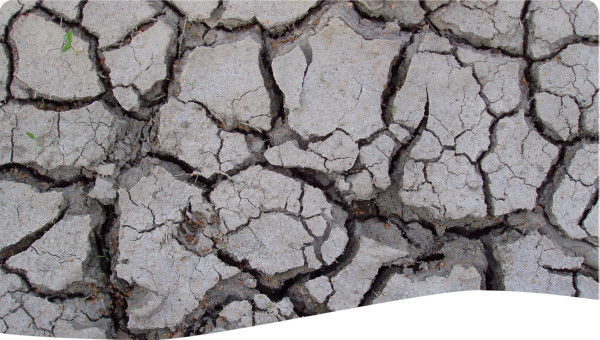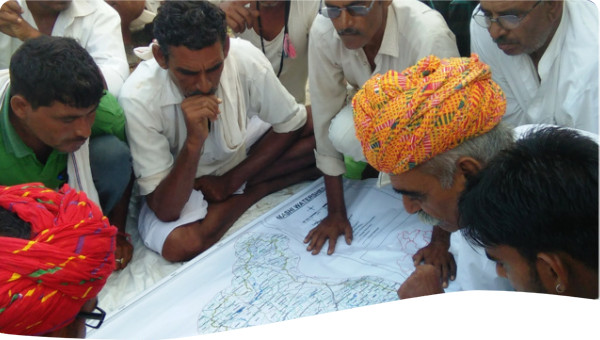The DriDanube project aimed to increase the society’s resilience to the occurrence of drought in the Danube region by developing a regional drought monitoring tool Drought Watch for better drought characterization and early warning over the region and a strategic document for improved proactive response to drought. Drought Watch includes a specter of drought indices, also based on satellite data, and additionally the results (maps) of cross-border unified drought impact and risk assessment. To improve active drought response at the decision-making level, a Danube Drought Strategy with an optimal drought management model was prepared for collaborative and proactive drought management.
At the time of the DriDanube project preparation, it was recognized that water scarcity and droughts hit the Danube region frequently and had significant impacts on the economy and welfare of the people. Despite damages in the last decades, drought was still not considered an issue of high priority and people were not aware of its impacts. Besides that, there was no systematic collection of drought impacts, there were a lack and incomparable drought risk assessment methodologies, and current drought management was reactive, dealing mainly with losses and damages, cooperation between key actors was missing and formal legislation mostly did not exist. With regard to these problems, 15 partners (from national hydromet services, research institutions, and a non-governmental organization) from 10 different Danube countries prepared the project Drought Risk in the Danube region or DriDanube in the frame of the Interreg Danube Transnational Programme, which started in 2017 and finished in 2019.
The main project objective was to increase the capacity of the Danube region with the help of all stakeholders involved in drought management with the aim to become more efficient during drought emergency response and to prepare better for the next drought. The aim was to develop support for stakeholders’ work (nat. operational services, decision-making authorities, regional bodies) via developing:
- Monitoring tool Drought Watch for earlier drought detection which would enable faster respond during drought development and with higher precision;
- Cross-border comparable methodologies for drought risk and impact Assessment which would allow more synchronized and accurate response on decision making level;
- DriDanube Strategy for clear guidance to improve drought emergency response and strengthened cooperation among operational services and decision-making authorities in drought response in the Danube region.
Goal 1: Improvement of drought monitoring by operational innovative service. Actions taken:
- Performing online surveys on stakeholders’ needs/requirements in daily work,
- Development of drought monitoring tool Drought Watch with all needed data infrastructure and processing established - an innovative tool integrates all available data, including a large volume of remote sensing products and serves the authorities to monitor, forecast, and respond during drought development faster and with higher precision.
- The partnership was trained on its use and national trainings were organised to further train stakeholders.
Goal 2: Unification of drought impact and risk assessments. Actions taken:
- Methodology for drought impact assessment was developed and National Reporting Networks (NRNs) for regular and cross-border comparable impact collection was established in most of the countries (consists of on-field reports, mostly volunteers). Protocols for aggregating results from observations into maps were set for routine integrations of impact maps into Drought Watch.
- Historical reports on drought impacts were collected and based on their yield forecasting algorithm were prepared.
- Methodology for drought risk assessment was developed and on the base of it drought risk maps were prepared for all countries in a climatological and yield-loss sense for a harmonized view of drought-prone areas across all-region
- Regional and national training (in each participating country) on the use of risk and impact assessments were organized.
Goal 3: From reactive to proactive drought emergency response. Actions taken:
- Existing drought management practices, gaps, and requirements were reviewed with stakeholders in all participating countries via national briefing & final seminars were organized in all countries
- On the base of the analysis, expressed requirements in the Danube region, an optimal drought management model was developed and a Strategy document was prepared.
In the field of improving stakeholders’ capacity for better drought characterization and early warning over the region, an open web-based tool Drought Watch was developed:
- A web-based tool enabling more accurate and efficient drought monitoring and early warning across the entire Danube region;
- Includes a set of Earth Observation data from a range of operational remote sensing satellites, processed into ready-to-use drought information and useful for a spatial and temporal view of soil moisture or vegetation status for drought analysis available to the public online;
- Improves operational day-to-day work of national authorities and end-users in all phases of drought.
- Available at: https://droughtwatch.eu/.
Missing drought impacts collection was enabled via National reporting networks (NRNs) with regular reporting on visible signs of drought impacts on vegetation throughout the year. Consisting of on-field reporters (mostly volunteers), NRNs provide harmonized and cross-border coherent drought impact assessment on how drought influences crop yield or forest growth in the Danube region. Weekly observations are aggregated into a weekly operational product - drought impact maps, which are integrated into Drought Watch.
Drought risk maps were prepared on the base of a unified calculation of drought risk, both in a climatological sense and in terms of risk for crop yield loss. They ensure unified drought risk assessment comparable among countries of the Danube region and provide information about the spatial distribution of the areas where meteorological drought occurred often as a hazard with significant impacts on crop yield. The maps are integrated into Drought Watch as a static product and available for maize, wheat, barley, and oilseed rape for different drought occurrence probability levels (5, 10, 20, 30%).
To improve the currently re-active drought response at the decision-making level, a Danube Drought Strategy was prepared. A document proposes a framework for improved drought management in the Danube region. It provides an optimal drought management model, a clear operational model for collaborative and proactive management of drought at the national level, thus organizing who is doing what and when. It organizes already existing legislation and institutions in an optimal way of cooperating and reacting at different stages of drought development for wholesome risk management (from monitoring and early warning to response and evaluation).
The model was shaped to help of associated strategic partners and national authorities in the field of drought management. Consulting with them also its practical application in the national framework presents additional progress achieve.
All project outputs, results are available at https://www.interreg-danube.eu/approved-projects/dridanube/outputs
Project cooperation triggered better “drought” communication on the national/transnational level. Transboundary approach is a way to better water/drought management.
Establishment of civil observatories (NRNs) showed that better results are reached when stakeholders are included from the start of the project. Knowledge gained through the project was a seedling for many new projects in other regions.
 Case studies
Case studies


